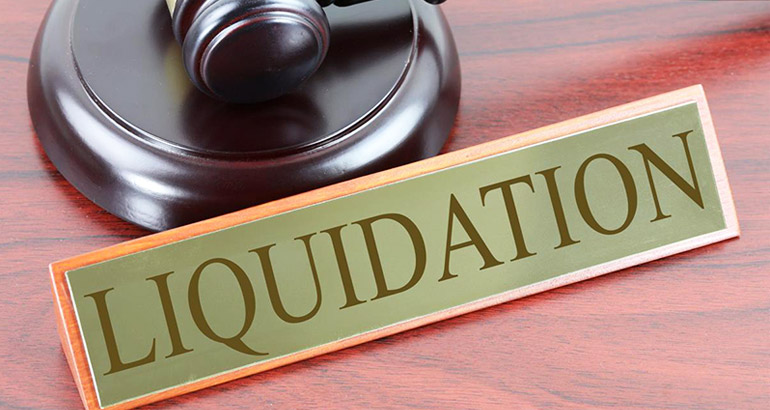Company Liquidation Fundamentals Explained
Company Liquidation Fundamentals Explained
Blog Article
Not known Facts About Company Liquidation
Table of ContentsSome Known Facts About Company Liquidation.Company Liquidation Things To Know Before You Get ThisGetting My Company Liquidation To WorkIndicators on Company Liquidation You Need To KnowSee This Report about Company Liquidation
A liquidator is particularly assigned to supervise the ending up of a company's affairs in order for it to be shut down commonly when the business is going bankrupt. The liquidator is an objective 3rd party that supervises the sale of firm properties in order to repay any kind of arrearages.Their function includes, but is not limited to: Unbiased Movie director: A liquidator is tasked with functioning as an unbiased 3rd party to look after the whole business liquidation procedure. Develop Declaration of Affairs: Liquidators should create a detailed statement of affairs document. This document is distributed to lenders, describing the present monetary standing of the business at the time of its liquidation.
After the liquidation of a business, its presence is removed from Firms Home and it discontinues to be a lawful entity. If directors navigated the process without issue, there would certainly be no charges or personal obligation for strong debts anticipated. Now, with a fresh start, supervisors can check out new company chances, though professional appointment is recommended.
Company Liquidation Fundamentals Explained
If more than 90% of all firm investors agree, liquidation can take place on short notification within 7 days, the minimum legal notification for lenders. Typically, the larger the liquidation and the more assets and resources the company has, the longer the procedure will certainly take.

We understand that no two firms are the very same, which is why we will make the effort to get to recognize your business so we can recommend the very best strategy for you. We just operate in your ideal interests, so you can be completely positive in the service we offer.
The Best Strategy To Use For Company Liquidation
In the UK, there is a set process to shutting down or restructuring a limited company, whether it is solvent or insolvent. This procedure is referred to as liquidation and can just be managed by a qualified bankruptcy expert (IP) according to the Insolvency Act 1986. There are 4 main sorts of business liquidation procedure: Creditors' Volunteer Liquidation (CVL); Compulsory liquidation; Administration; and Participants' Voluntary Liquidation (MVL).

In these circumstances, it is essential that the company ceases trading; if business remains to trade, the supervisors can be held personally liable and it can cause the insolvency expert reporting wrongful trading, called misfeasance, which may cause lawsuit. The directors appoint a bankruptcy professional and when this has been concurred and verified, there is a conference with the investors.
Of course, if there are no shareholders, this step of the procedure is not required (Company Liquidation). The IP takes control of the business and starts the business liquidation procedure. The directors are no longer entailed in what happens, consisting of the sale of the firm's assets. Nevertheless, if the supervisors desire any one of the assets, they can alert the IP.
8 Easy Facts About Company Liquidation Shown
The primary difference is that the company's financial institutions put on the court for an ending up order which forces the financially troubled firm into a liquidation process. For the most part, financial institutions take this activity as Company Liquidation a last resource due to the fact that they haven't obtained settlement through other types of negotiation. The court appoints a bankruptcy practitioner, also known as an official receiver, to carry out the mandatory firm liquidation procedure.
This sort of company liquidation is not volunteer and supervisors' conduct is reported to the UK's Secretary of State once the liquidation procedure has get redirected here actually been completed. Therefore, any kind of supervisor that falls short to accept the IP or has actually been associated with director transgression, or a fraudulent act, may cause major repercussions (Company Liquidation).
It is utilized as a way to protect the business from any kind of lawful action by its lenders. The supervisors of the business agree to make normal repayments to resolve their debts over a duration of time.
5 Easy Facts About Company Liquidation Explained
This provides the company with time to create a strategy going forward to rescue the business and avoid liquidation. However, at this moment, directors hand control of the firm over to the designated manager. If a business is solvent however the directors and shareholders desire to close the organization, a Participants Volunteer Liquidation is the right choice.
The firm liquidation process is taken care of check it out by a liquidator appointed by the supervisors and investors of the company and they need to sign a statement that there are no financial institutions staying. The liquidation process for an MVL resembles that of a CVL because assets are become aware but the profits are dispersed to the supervisors and the investors of the company after the liquidator's charges have been paid.
Report this page